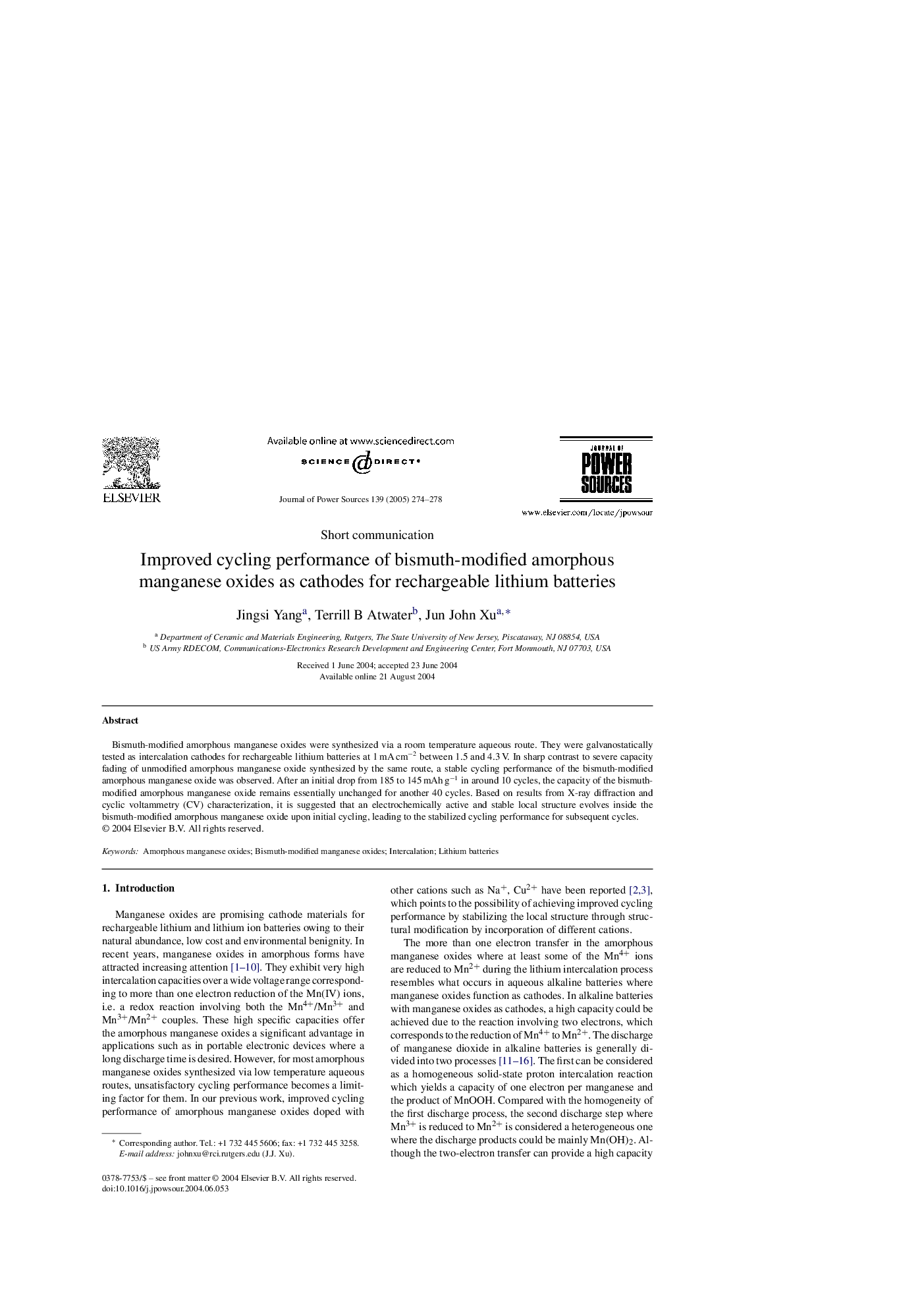| Article ID | Journal | Published Year | Pages | File Type |
|---|---|---|---|---|
| 9760525 | Journal of Power Sources | 2005 | 5 Pages |
Abstract
Bismuth-modified amorphous manganese oxides were synthesized via a room temperature aqueous route. They were galvanostatically tested as intercalation cathodes for rechargeable lithium batteries at 1 mA cmâ2 between 1.5 and 4.3 V. In sharp contrast to severe capacity fading of unmodified amorphous manganese oxide synthesized by the same route, a stable cycling performance of the bismuth-modified amorphous manganese oxide was observed. After an initial drop from 185 to 145 mAh gâ1 in around 10 cycles, the capacity of the bismuth-modified amorphous manganese oxide remains essentially unchanged for another 40 cycles. Based on results from X-ray diffraction and cyclic voltammetry (CV) characterization, it is suggested that an electrochemically active and stable local structure evolves inside the bismuth-modified amorphous manganese oxide upon initial cycling, leading to the stabilized cycling performance for subsequent cycles.
Keywords
Related Topics
Physical Sciences and Engineering
Chemistry
Electrochemistry
Authors
Jingsi Yang, Terrill B Atwater, Jun John Xu,
